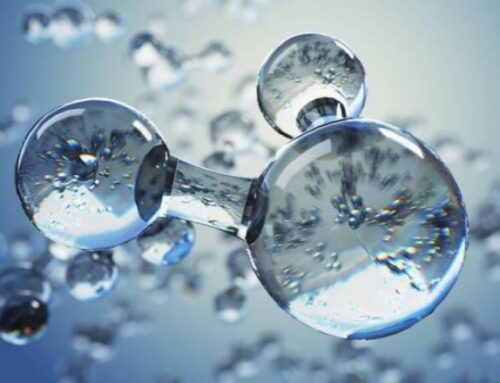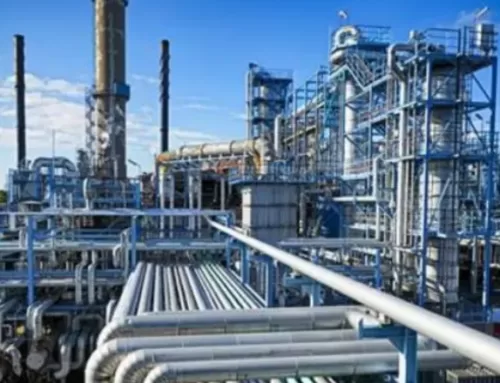With the increasing development of science and technology, polymer materials play an increasingly important role in today’s society, especially various types of synthetic fibers, synthetic resins, and plastic products have become indispensable and important components of people’s daily lives. However, few people realize that the production of all these essential goods is inseparable from the massive polyolefin industry and the Ziegler-Natta catalyst that drives the leapfrog development of the polyolefin industry.
Initially, olefin polymerization was carried out using free radical polymerization, which required high-pressure reaction conditions and multiple chain transfer reactions during the reaction process, resulting in the production of a large number of branched products. For polypropylene, the problem is particularly serious as it cannot synthesize high degree of polymerization polypropylene. In the 1950s, German chemist Karl Ziegler and Italian chemist Giulio Natta invented catalysts for olefin polymerization, known as Ziegler-Natta catalysts (Z-N catalysts), and opened up a new field of directional polymerization, making it possible to synthesize highly regular polyolefins. From then on, the production of many plastics no longer requires high pressure, reducing production costs and allowing producers to control the structure and properties of the products. Due to the outstanding contributions of Ziegler and Natta to olefin polymerization, they shared the 1963 Nobel Prize in Chemistry.
Catalytic mechanism of Ziegler-Natta catalyst
Ziegler-Natta catalysts are mainly composed of halides of group IV-VIII elements (such as Ti, Co, Ni) and alkyl compounds or alkyl halides of group I-III metals (such as Al, Be, Li). The currently recognized polymerization mechanism is (taking ethylene polymerization as an example): titanium tetrachloride first reacts with organic aluminum, is reduced to titanium trichloride, and then alkylated to obtain alkyl titanium chloride. The olefin first coordinates on the vacancy of the titanium atom to form a π – complex. After further displacement and insertion, the remaining vacancies can coordinate with the second molecule of olefin, thus repeating the process of chain growth.

The Development History of Ziegler-Natta Catalysts
It has been more than 60 years since the birth of Ziegler-Natta catalysts, and they have gone through the following development processes:
The first generation Z-N catalyst: The initial Z-N catalyst had low activity (catalytic activity: the mass of polyolefin obtained by 1g titanium catalysis), about 2kg of polyethylene and 3kg of polypropylene. The obtained polyethylene needs to be treated with chemical reagents (alcohols, fatty acids) to remove catalyst residues and reduce the titanium content to below 10 × 10-6 in order to meet the usage requirements. However, the mass fraction of polypropylene and other conventional components is only 90%, and the polymerization process requires complex steps for removing ash and random components.
The second generation Z-N catalyst: In the late 1960s, the method of introducing Lewis bases into the catalytic system emerged, forming the second generation Z-N catalyst. The use of Lewis bases results in a larger surface area and improved catalytic activity of Z-N catalysts. A typical second-generation Z-N catalyst product has a specific surface area of up to 150 m2/g, catalytic activity of 20kg polypropylene, and an isotropy of 95% by mass. The Lewis bases used include esters, ethers, alcohols, amines, phosphines, and other electron donors. The characteristics of the second-generation Z-N catalyst are that its catalytic activity and stereoselectivity have been improved compared to the previous generation. However, due to the relatively low catalytic activity, the catalyst remains in the polymer, and it is necessary to carry out a process of removing ash and irregular substances from the polymer.
The third generation Z-N catalyst: In the late 1970s to early 1980s, the immobilization of Z-N catalyst became a huge innovation and progress in catalysts. Usually, such highly active and structurally regular supported catalysts are referred to as third-generation Z-N catalysts. At that time, Mitsui Chemical Company had outstanding achievements in this area. In 1975, they successfully developed a MgCl2 supported ethylbenzoate catalyst with a catalytic activity of about 300kg of polypropylene and an isotropy of 92-94%. Subsequently, the company added two external electron donors, diisobutyl phthalate and diphenyldimethoxysilane, during the polymerization process of the catalyst. Make the reaction activity of the catalyst exceed 1000kg, and at the same time, the isotropy exceeds 98%, without the need for further unconventional steps. Moreover, in order to improve the flowability of polypropylene particles, techniques for controlling particle size, particle size distribution, and particle shape have also been established. For the first time in the world, a gas-phase polymerization process using highly active and highly ordered stereoselective catalysts has been achieved without ash removal or any specific process. The emergence of third-generation Z-N catalysts has shifted the focus of Z-N catalyst development from increasing catalytic activity to controlling the structure, morphology, performance, and olefin polymer structure of Z-N catalysts.
The fourth generation Z-N catalyst: In the mid-1980s, the fourth generation Z-N catalyst – spherical supported catalyst – emerged. This type of catalyst was developed by Himont company. Its characteristic is the ability to control the physical and chemical properties of the carrier itself, as well as the distribution of active centers on the carrier, with particle reactor performance. The catalytic efficiency is greatly improved, reaching tens of thousands to millions of grams of polyethylene. It can generate polyolefins with different molecular weights and mass distributions, and obtain polyolefin resins with different relative densities. The product has spherical or quasi spherical particle morphology, which enables the preparation of polyolefin products with good morphology and high bulk density, making the long-awaited granulation free process possible. The emergence of the fourth generation Z-N catalyst marks the maturity of research and production in polyolefin polymerization catalysis technology. The vast majority of low-pressure polyolefin production facilities in the world today use third-generation and fourth generation Z-N catalysts.

The contribution of Ziegler-Natta catalyst to human society
The driving force of Ziegler-Natta catalyst on the development of the entire human society is unparalleled! Polyolefin products produced using Ziegler-Natta catalysts are widely used in various aspects of technology, military, and daily life. It has had a profound impact on human eating, wearing, using, living, and transportation. It can be said without exaggeration that without polyolefin products, modern society will be difficult to sustain!
1. Daily application
The plastic cups and lunch boxes used in daily life are made of polypropylene. The commonly used acrylic fiber (PAN) in clothing has a shiny appearance and a soft touch, and is used as a substitute for wool. High density polyethylene can be used as building materials, large pipes, and wires and cables. In the automotive industry, plastic products are also receiving increasing attention. In addition to its advantages of light weight, safety, and comfort, plastic also has the characteristic of being more corrosion-resistant than metal. In addition, plastic has the advantages of easy processing, easy automation, and cost reduction. Therefore, more and more metal parts in the automotive manufacturing industry are being replaced by plastic parts. At present, the amount of plastic used accounts for about 20% of the weight of cars. Among them, polypropylene products have the fastest growth rate and are used as bumpers, instrument panels, batteries, etc. Polyethylene products are equally important, high-density polyethylene can be used as air ducts, ceilings, fenders, etc., especially as fuel tanks.

2. Aerospace applications
For aerospace and military industries, the plastic products industry plays an indispensable role. Due to the excellent properties of high-strength polyethylene, this material and its composites have become one of the most widely used new advanced materials. Can be used for wing tip fairings and dorsal fins of aircraft. It can also be used as a drag parachute for airplanes and space shuttles. Due to its low dielectric constant, low dielectric loss value, and minimal electrical signal distortion, high-strength polyethylene is the preferred material for high-performance lightweight radar covers of various aircraft.
3. Defense applications
Ultra high molecular weight polyethylene fibers have good impact resistance and high energy absorption. They can be used as protective clothing and bulletproof materials in military applications, such as armor plates, missile shields, bulletproof vests, stab proof vests, shields, etc. for helicopters, tanks, and ships. Among them, the application of bulletproof vests is the most eye-catching. It has the advantage of softness and better bulletproof effect than aramid, and has become the main fiber occupying the bulletproof vest market in the United States. In addition, the specific impact load value U/p of ultra-high molecular weight polyethylene fiber composite material is 10 times that of steel and more than 2 times that of glass fiber and aramid, making it particularly suitable for making protective materials. The most advanced Type 99 main battle tank in China uses ultra-high molecular weight polyethylene fiber material for its protective armor.

Summary
After more than 60 years of development, Ziegler-Natta catalyst has become the most mature and widely used catalyst for olefin polymerization today, applied in the preparation of over 90% of polyolefin products worldwide. And there are constantly new products with better performance emerging. The range of polyolefin products produced continues to expand, shifting from general-purpose materials to functional materials. The continuous improvement of Ziegler-Natta catalyst performance has also promoted the leapfrog development of polyolefin production technology. A series of major breakthroughs since the 1990s, including supported catalysts, polymer morphology control, and reactor alloy technology for improving product performance, have proven that traditional Ziegler-Natta catalysts still have extraordinary innovation potential. Their use and improvement will continue to dominate for a considerable period of time in the future, with broad development prospects.
Reference
[1]Cower,Jr.H.W.;Jorer,F.B.Three-component alkyl aluminum halide catalysts for olefin polymerization,US,2969345[P].1961-01-24.
[2]Pino,P.;Mülhaupt,R.Stereospecific Polymerizaion of Propylene:An Outlook 25 Years after Its Discovery[J].Angew.Chem.Int.Ed.2003,19,857-875.
[3] Hong Dingyi Handbook of Plastic Industry, Polyolefin [M] Beijing: Chemical Industry Press, 1999, 21
Article source: www.xianjichina.com
M&J International Trading Co., Ltd





